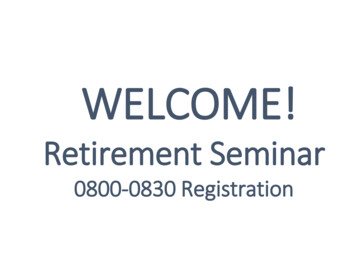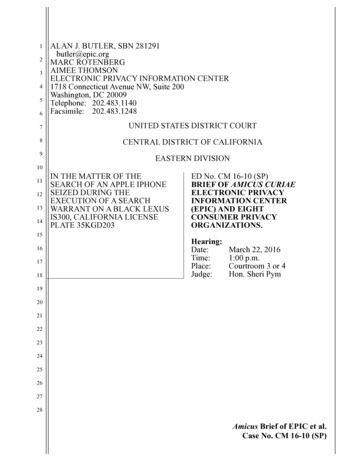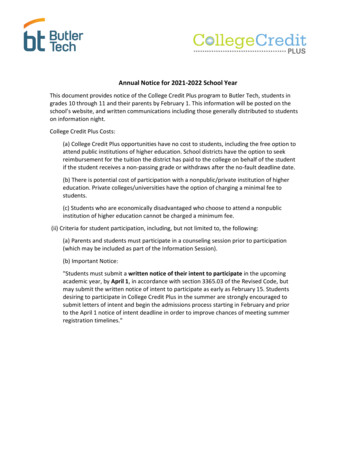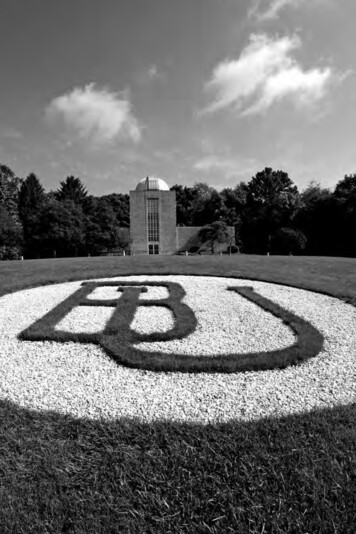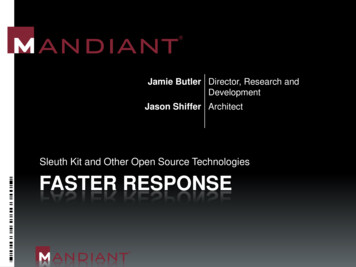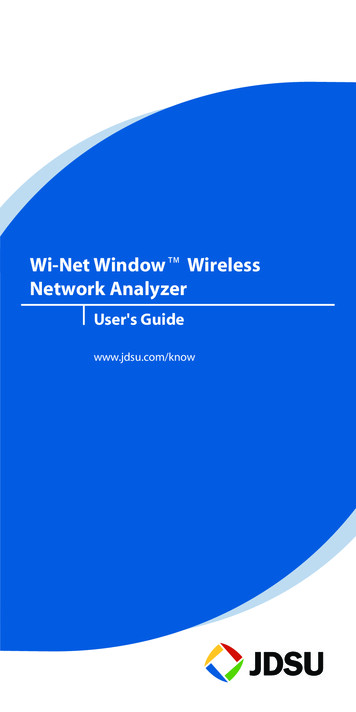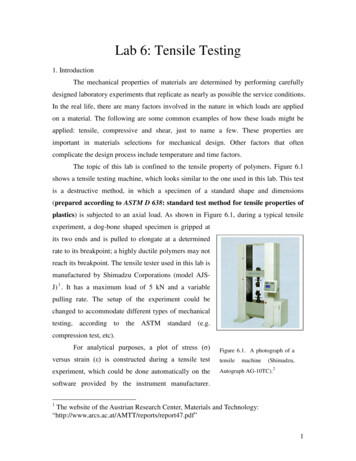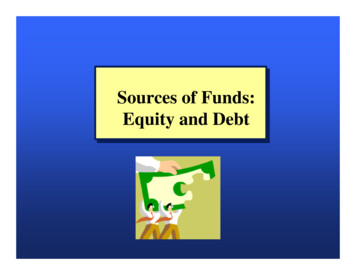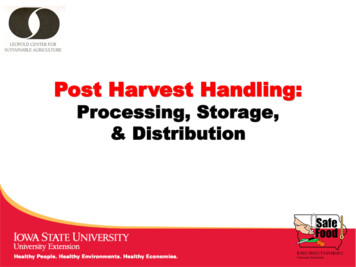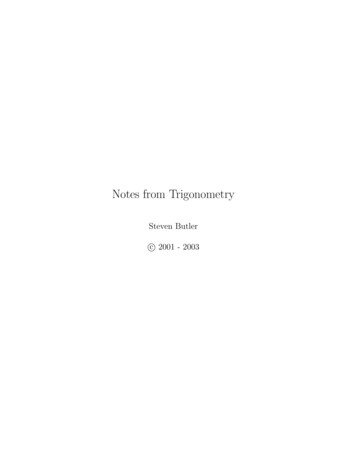
Transcription
Notes from TrigonometrySteven Butlerc 2001 - 2003
ContentsDISCLAIMERviiPreface1 The1.11.21.31.4viiiusefulness of mathematicsWhat can I learn from math? .Problem solving techniques . . .The ultimate in problem solvingTake a break . . . . . . . . . .2 Geometric foundations2.1 What’s special about triangles?2.2 Some definitions on angles . . .2.3 Symbols in mathematics . . . .2.4 Isoceles triangles . . . . . . . .2.5 Right triangles . . . . . . . . .2.6 Angle sum in triangles . . . . .2.7 Supplemental problems . . . . .3 rean theoremThe Pythagorean theorem . . . . . . . . . . . . . .The Pythagorean theorem and dissection . . . . . .Scaling . . . . . . . . . . . . . . . . . . . . . . . . .The Pythagorean theorem and scaling . . . . . . .Cavalieri’s principle . . . . . . . . . . . . . . . . . .The Pythagorean theorem and Cavalieri’s principleThe beginning of measurement . . . . . . . . . . . .Supplemental problems . . . . . . . . . . . . . . . .141415161819202021i.
CONTENTS4 Angle measurement4.1 The wonderful world of π . . . . . . . . .4.2 Circumference and area of a circle . . . .4.3 Gradians and degrees . . . . . . . . . . .4.4 Minutes and seconds . . . . . . . . . . .4.5 Radian measurement . . . . . . . . . . .4.6 Converting between radians and degrees4.7 Wonderful world of radians . . . . . . . .4.8 Supplemental problems . . . . . . . . . .ii.5 Trigonometry with right triangles5.1 The trigonometric functions . . . . . . . .5.2 Using the trigonometric functions . . . . .5.3 Basic Identities . . . . . . . . . . . . . . .5.4 The Pythagorean identities . . . . . . . . .5.5 Trigonometric functions with some familiar5.6 A word of warning . . . . . . . . . . . . .5.7 Supplemental problems . . . . . . . . . . . . . . . . . . . . . . . . . . . . . . .triangles . . . . . . . . . . .242425252728282930.32323435353637386 Trigonometry with circles6.1 The unit circle in its glory . . . . . . . . . . . .6.2 Different, but not that different . . . . . . . . .6.3 The quadrants of our lives . . . . . . . . . . . .6.4 Using reference angles . . . . . . . . . . . . . .6.5 The Pythagorean identities . . . . . . . . . . . .6.6 A man, a plan, a canal: Panama! . . . . . . . .6.7 More exact values of the trigonometric functions6.8 Extending to the whole plane . . . . . . . . . .6.9 Supplemental problems . . . . . . . . . . . . . .424243444446464848497 Graphing the trigonometric functions7.1 What is a function? . . . . . . . . . . . . . .7.2 Graphically representing a function . . . . .7.3 Over and over and over again . . . . . . . .7.4 Even and odd functions . . . . . . . . . . .7.5 Manipulating the sine curve . . . . . . . . .7.6 The wild and crazy inside terms . . . . . . .7.7 Graphs of the other trigonometric functions7.8 Why these functions are useful . . . . . . . .7.9 Supplemental problems . . . . . . . . . . . .53535455555658606062.
CONTENTSiii8 Inverse trigonometric functions8.1 Going backwards . . . . . . . . . . . . . . .8.2 What inverse functions are . . . . . . . . . .8.3 Problems taking the inverse functions . . . .8.4 Defining the inverse trigonometric functions8.5 So in answer to our quandary . . . . . . . .8.6 The other inverse trigonometric functions . .8.7 Using the inverse trigonometric functions . .8.8 Supplemental problems . . . . . . . . . . . .9 Working with trigonometric identities9.1 What the equal sign means . . . . . . .9.2 Adding fractions . . . . . . . . . . . .9.3 The conju-what? The conjugate . . . .9.4 Dealing with square roots . . . . . . .9.5 Verifying trigonometric identities . . .9.6 Supplemental problems . . . . . . . . .10 Solving conditional relationships10.1 Conditional relationships . . . .10.2 Combine and conquer . . . . . .10.3 Use the identities . . . . . . . .10.4 ‘The’ square root . . . . . . . .10.5 Squaring both sides . . . . . . .10.6 Expanding the inside terms . .10.7 Supplemental problems . . . . .11 The11.111.211.311.411.5.sum and difference formulasProjection . . . . . . . . . . . . . . . . .Sum formulas for sine and cosine . . . .Difference formulas for sine and cosine .Sum and difference formulas for tangentSupplemental problems . . . . . . . . . .12 Heron’s formula12.1 The area of triangles . . .12.2 The plan . . . . . . . . . .12.3 Breaking up is easy to do .12.4 The little ones . . . . . . .12.5 Rewriting our terms . . .12.6 All together . . . . . . . 4.858586878889.91919192939394
CONTENTSiv12.7 Heron’s formula, properly stated . . . . . . . . . . . . . . . . . . . . 9512.8 Supplemental problems . . . . . . . . . . . . . . . . . . . . . . . . . 9513 Double angle identity and such13.1 Double angle identities . . . .13.2 Power reduction identities . .13.3 Half angle identities . . . . . .13.4 Supplemental problems . . . .9797989910014 Product to sum and vice versa14.1 Product to sum identities . .14.2 Sum to product identities . .14.3 The identity with no name . .14.4 Supplemental problems . . . .10310310410510715 Law of sines and cosines15.1 Our day of liberty . . .15.2 The law of sines . . . .15.3 The law of cosines . . .15.4 The triangle inequality15.5 Supplemental problems.109109109110112113.116. 116. 117. 117. 118. 121. 121.123. 123. 123. 124. 125. 126. 126. 128. 129.16 Bubbles and contradiction16.1 A back door approach to proving16.2 Bubbles . . . . . . . . . . . . . .16.3 A simpler problem . . . . . . . .16.4 A meeting of lines . . . . . . . . .16.5 Bees and their mathematical ways16.6 Supplemental problems . . . . . .17 Solving triangles17.1 Solving triangles . . . . . . . . . .17.2 Two angles and a side . . . . . . .17.3 Two sides and an included angle . .17.4 The scalene inequality . . . . . . .17.5 Three sides . . . . . . . . . . . . .17.6 Two sides and a not included angle17.7 Surveying . . . . . . . . . . . . . .17.8 Supplemental problems . . . . . . .
CONTENTS18 Introduction to limits18.1 One, two, infinity. . . . . . .18.2 Limits . . . . . . . . . . . . .18.3 The squeezing principle . . . .18.4 A limit involving trigonometry18.5 Supplemental problems . . . .v.13313313413413513619 Viète’s formula13919.1 A remarkable formula . . . . . . . . . . . . . . . . . . . . . . . . . . 13919.2 Viète’s formula . . . . . . . . . . . . . . . . . . . . . . . . . . . . . 14020 Introduction to vectors20.1 The wonderful world of vectors . . . . . . . . . . .20.2 Working with vectors geometrically . . . . . . . . .20.3 Working with vectors algebraically . . . . . . . . .20.4 Finding the magnitude of a vector . . . . . . . . . .20.5 Working with direction . . . . . . . . . . . . . . . .20.6 Another way to think of direction . . . . . . . . . .20.7 Between magnitude-direction and component form .20.8 Applications to physics . . . . . . . . . . . . . . . .20.9 Supplemental problems . . . . . . . . . . . . . . . .21 The21.121.221.321.421.521.621.7dot product and its applicationsA new way to combine vectors . . . . .The dot product and the law of cosinesOrthogonal . . . . . . . . . . . . . . .Projection . . . . . . . . . . . . . . . .Projection with vectors . . . . . . . . .The perpendicular part . . . . . . . . .Supplemental problems . . . . . . . . .141141141143144145146146147147.150. 150. 151. 152. 153. 154. 154. 15522 Introduction to complex numbers22.1 You want me to do what? . . . . . . . . . . . . .22.2 Complex numbers . . . . . . . . . . . . . . . . . .22.3 Working with complex numbers . . . . . . . . . .22.4 Working with numbers geometrically . . . . . . .22.5 Absolute value . . . . . . . . . . . . . . . . . . .22.6 Trigonometric representation of complex numbers22.7 Working with numbers in trigonometric form . . .22.8 Supplemental problems . . . . . . . . . . . . . . .158158159159160160161162163
CONTENTS23 De Moivre’s formula and induction23.1 You too can learn to climb a ladder .23.2 Before we begin our ladder climbing .23.3 The first step: the first step . . . . .23.4 The second step: rinse, lather, repeat23.5 Enjoying the view . . . . . . . . . . .23.6 Applying De Moivre’s formula . . . .23.7 Finding roots . . . . . . . . . . . . .23.8 Supplemental problems . . . . . . . .A Collection of equationsvi.164164164165166167167169170171
DISCLAIMERThese notes may be freely copied, printed and/or used in any educational setting.These notes may not be distributed in any way in a commercial setting withoutthe express written consent of the author.While every effort has been made to ensure that the notes are free of error, itis inevitable that some errors still remain. Please report any errors, suggestions orquestions to the author at the following email addresssbutler@math.ucsd.eduvii
PrefaceDuring Fall 2001 I taught trigonometry for the first time. To supplement the classlectures I would prepare a one or two page handout for each lecture. Over thecourse of the next year I taught trigonometry two more times and those notesgrew into the book that you see before you.My major motivation for creating these notes was to talk about topics notusually covered in trigonometry, but should be. These include such topics asthe Pythagorean theorem (Lecture 2), proof by contradiction (Lecture 16), limits(Lecture 18) and proof by induction (Lecture 23). As well as giving a geometricbasis for many of the relationships of trigonometry.Since these notes grew as a supplement to a textbook, the majority of theproblems in the supplemental problems (of which there are several for almost everylecture) are more challenging and less routine than would normally be found in abook of trigonometry (note there are several inexpensive problem books availablefor trigonometry to help supplement the text of this book if you find the problemslacking in number). Most of the problems will give key insights into new ideas andso you are encouraged to do as many as possible by yourself before going for help.I would like to thank Brigham Young University’s mathematics department forallowing me the chance to teach the trigonometry class and giving me the freedomI needed to develop these notes. I would also like to acknowledge the influence ofJames Cannon. The most beautiful proofs and ideas grew out of material that Ilearned from him.viii
Lecture 1The usefulness of mathematicsIn this lecture we will discuss the aim of an education in mathematics, namely tohelp develop your thinking abilities. We will also outline several broad approachesto help in developing problem solving skills.1.1What can I learn from math?To begin consider the following taken from Abraham Lincoln’s Short Autobiography(here Lincoln is referring to himself in the third person).He studied and nearly mastered the six books of Euclid since he was amember of congress.He began a course of rigid mental discipline with the intent to improvehis faculties, especially his powers of logic and language. Hence hisfondness for Euclid, which he carried with him on the circuit till hecould demonstrate with ease all the propositions in the six books; oftenstudying far into the night, with a candle near his pillow, while hisfellow-lawyers, half a dozen in a room, filled the air with interminablesnoring.“Euclid” refers to the book The Elements which was written by the Greekmathematician Euclid and was the standard textbook of geometry for over twothousand years. Now it is unlikely that Abraham Lincoln ever had any intentionof becoming a mathematician. So this raises the question of why he would spendso much time studying the subject. The answer I believe can be stated as follows:Mathematics is bodybuilding for your mind.Now just as you don’t walk into a gym and start throwing all the weights ontoa single bar, neither would you si
He studied and nearly mastered the six books of Euclid since he was a member of congress. He began a course of rigid mental discipline with the intent to improve his faculties, especially his powers of logic and language. Hence his fondness for Euclid, which he carried with him on the circuit till he could demonstrate with ease all the propositions in the six books; often studying far into the .
